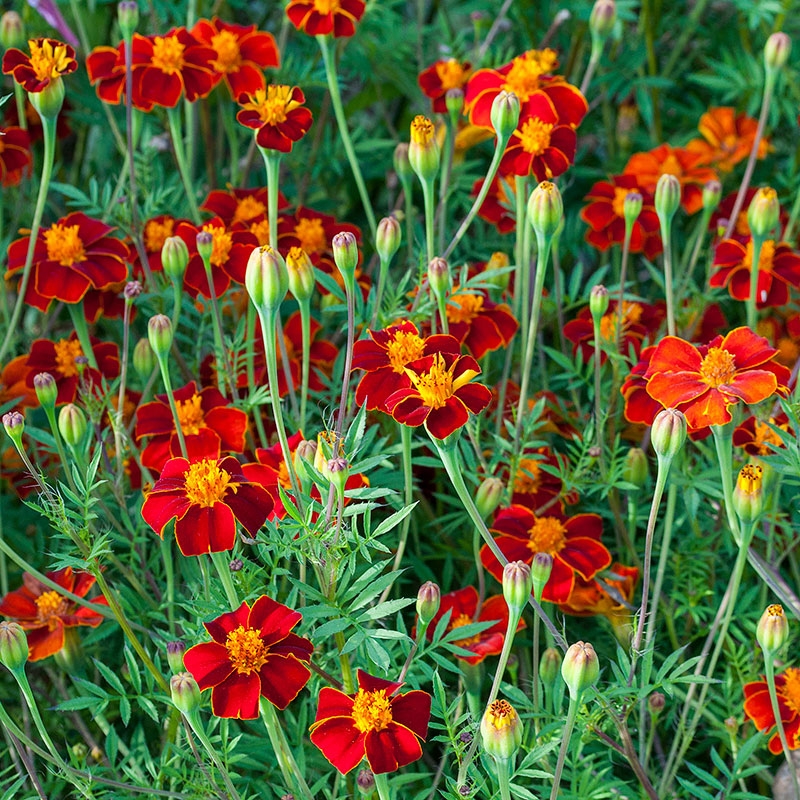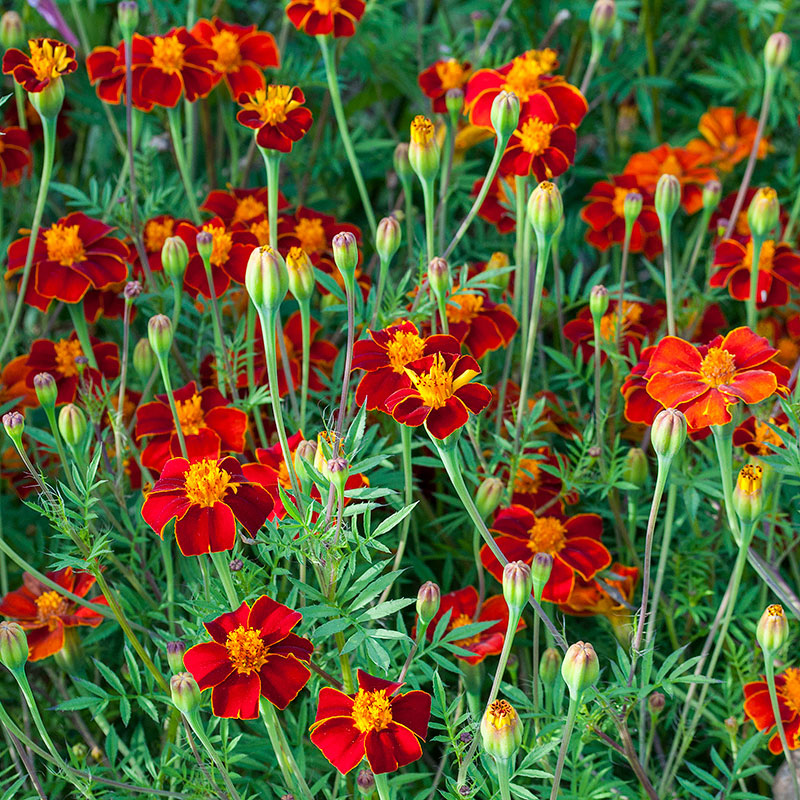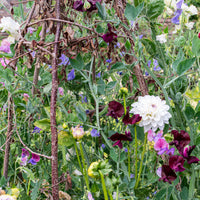SOWING INSTRUCTIONS
Seed To Bloom:
8-10 weeks
Starting Indoors:
Sow 6-8 weeks before last frost. Sow seeds thinly and keep at 65-75°F.
Starting Outdoors:
Direct sow at last spring frost date for later summer blooms.
PLACEMENT & CULTIVATION
The full branching form and forest green foliage of marigolds make them great backdrops for early summer bloomers. As the weather starts to cool in mid to late summer, they come into their own, and every branch seems tipped with flowers of mahogany red and glinting gold. Useful in the middle border and veggie garden, they naturally repel insect pests. The flowers are good cut, as long as you appreciate their earthily-scented leaves. Deadhead for continued bloom until frost.
Watering Details:
About 1" per week, though it will tolerate some drought once established.
Soil pH:
Prefers slightly acidic to neutral.
Fertilizer:
Mix in about an inch or two of compost or some organic granular fertilizer when transplanting. Flowers well with little added fertilizer, too much and foliage will be lush and flowers less abundant.
Diseases & Pests:
Be sure to space properly to increase air circulation and avoid fungal issues such as leaf spot. Japanese beetles can be hand-picked into a bowl of soapy water. If insects such as spider mites, aphids, thrips, or whiteflies are an issue, treat with an insecticidal soap.
When to Cut for Bouquets:
Harvest when flowers are fully open.


































